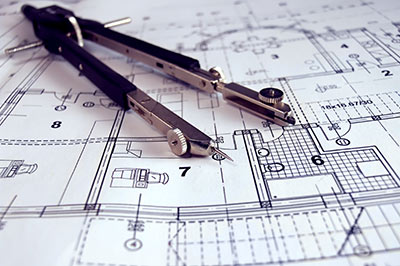Lackney, 2007. The intent of this document is to provide a framework of educational design principles from which educators and design professionals can structure the content of their educational facility development process, from the earliest strategic and educational planning stages right through to design, construction, occupancy and facility management.
Tag: Community Schools
Community Schools as an Essential Facilities Strategy
By Helen Janc Malone & Reuben Jacobson, September 8, 2014.
School buildings communicate important messages to our children, their families, the community, and the educators and personnel that work there. A school’s physical appearance speaks to people about the value our society places on education and on the role of the school in the community. Too often, our urban school facilities send the wrong messages.
However, in communities with scarce resources, school facilities can play a particularly vital role. We call them community schools. They:
- create a safe and supportive school culture and a climate for learning in the school and community;
- develop engaging learning experiences inside and outside the classroom that enable students to prepare for college, career, and life;
- ensure that young people have the opportunities and supports that every family seeks for their children—mentoring, after school and summer activities, arts and cultural events, health and mental health services, nutritious meals, and more;
- engage families and communities in problem-solving of pressing community issues; and
- build social capital—the networks and relationships so critical to helping young people develop the ‘agency’ they need to face life’s challenges and become productive workers and citizens.
Community schools bring the assets of the community into the school facility. Depending on the local context, community schools might house a library, a career center, doctors, dentists, social services, recreational spaces, or after school and weekend programs. In a community school, families, educators, and communities are equal decision-makers. When the design of school space is built on community input, and includes services and activities that young people, families, and communities need, the community school becomes a vibrant resource for all.
There is a long history of seeing school buildings as centers of communities. In the early 1900s John Dewey, the famous Progressive educator, wrote about schools as social centers. He envisioned schools as a gathering place for people to learn from one another and throughout their lives regardless of age. That ideal continues today and is manifested best when school buildings become community schools.
As Secretary Arne Duncan noted: "I'd like to see public schools open 12, 13, 14 hours a day, year-round, offering not just mentoring and tutoring programs but art, chess, family literacy nights, debate teams, and GED and ESL programs for parents. It doesn't have to be that expensive to keep schools open longer. In every school you have classrooms, computer labs, libraries, and gyms. Rent the school out for free from 3:00 to 9:00 PM to great non-profit partners like the YMCA's, the Boys and Girls Club, college-readiness programs, and other enrichment activities. It is a tremendous waste of resources that schools aren't doing more to serve as one-stop community centers."
Cincinnati Community Learning Centers
Many school districts and communities are using the school building to transform communities. Cincinnati’s community schools, called Community Learning Centers (CLCs), illustrate how school and community leaders leveraged new funding for school construction to engage the community and to promote fairness and opportunity.
In 1999, Cincinnati Public Schools Facility Master Plan invested $1 billion to rebuild its public schools and turn them into community hubs, with resources and opportunities for all. Central to the district’s effort was to engage each neighborhood in a conversation about what they wanted their schools to look like. The conversation led to schools co-located community partners that promote academic excellence and provide recreational, educational, social, health, civic, and cultural opportunities for students, their families, and the community. And in several cases schools became K-12 facilities in response to a community demand.
How did this happen? Each school community decided which opportunities and supports they wanted based on local needs and assets. For example, when a community identified access to health care as a critical need, the CLC was designed to house a health clinic. When another community needed high quality early childhood opportunities, planners incorporated space for an early childhood center.
What results do we see from Cincinnati’s facilities plan and community engagement? The school board has made all schools CLCs, Cincinnati students have demonstrated significant academic improvement, neighborhoods are being revitalized and more families are moving back to the city. And there are myriad of strong partnerships with community groups, business, and others that are all working inside school buildings to create places were all children and families succeed.
An emerging example of a substantial investment in school facilities come from Baltimore. The State of Maryland has recently passed a $1 billion facilities plan to revitalize Baltimore’s public school buildings. As Michael Sarbanes, former Baltimore City Schools’ Executive Director of Engagement, stated, “…this work is based on the belief that schools are an anchor in the community and the schools should be an asset for community life where they’re located.”
School Facility as a Community School
So what are school facilities like around the country and what vision can we create for better school facilities that encourage better learning? A recent report, the Condition of America’s Public School Facilities: 2012 –13, states that over half of our public schools require “repairs, renovations, and modernizations to put the school’s onsite buildings in good overall condition.” The report estimates that it will require $197 billion, or $4.5 million per school to revitalize our schools.
Policymakers responsible for funding repairs to existing buildings or for funding new facilities should keep two things in mind:
- Robust citizen participation in the planning process is essential to designing schools that are deeply rooted in community and responsive to its needs;
- The way we design schools is a key factor in mobilizing the entire community to support young people.
Using the school facility as a community school is the way to achieve our ideals of the school as a social center, a place that values learning at all ages, and that creates equitable opportunities for all.
Dr. Helen Janc Malone
Director of Institutional Advancement
National Director, Education Policy Fellowship Program
Reuben Jacobson
Senior Associate for Research and Strategy, Coalition for Community Schools
Helping Johnny Walk to School. Policy Recommendations for Removing Barriers to Community-Centered Schools
Kuhlman, R. (2010).
School districts are responsible for the education of almost 50 million public school students. Nearly all decision about the use and location of school facilities are made by local school districts-but the impact of these decisions goes far beyond the school and the education of its students. This report identifies the larger community interest in decisions about retaining existing schools and deciding where to locate new ones. It describes the states' role in school siting decisions and identifies state level policy changes that will ensure that educational, environmental, health, community, and fiscal considerations are weighed by communities when school districts make school closing, consolidation, and site selection decisions.
Beyond the School Walls – Community Events and their Impact on Schools
United States Department of Education (2007).
The United States Department of Education (USDOE) noted schools are an integral part of their communities; when a community experiences a major event or crisis, schools in that community are also affected. All-hazard emergency management plans should therefore be comprehensive, focusing on crises and hazards behind school walls as well as potential community events that could also impact the school community. Schools should think beyond their immediate buildings and grounds when creating emergency management plans and procedures framed within the context of the four phases of emergency management: Prevention-Mitigation, Preparedness, Response and Recovery.
USDOE_Beyond the School Walls-Community Events & Their Impact on Schools (2007)
Report On Enabling and Supporting Community Use of K-12 Public School Facilities Released
Joint use of public school facilities is a complex but manageable approach to efficiently enhancing the services and programs available to students and supporting the community use of public schools. Building upon on our 2010 paper titled Joint Use of Public Schools: A Framework for a New Social Contract, this paper identifies the policy framework needed to support sustainable joint use of public schools. Our goal with this paper is to provide local and state leaders with the policy framework needed to enable and support community use. The policy framework addresses the challenges to harnessing the opportunities and benefits of the community use of K–12 public schools. We discuss the policy elements that have been and can be used to incorporate joint use into normal planning and operations of school districts and local and regional public agencies and to do so in a sustainable and fiscally-responsible manner. The framework addresses policy at the state and local levels and acknowledges that joint use requires public and private agencies to work together in new ways. This paper also describes the need for public transparency and understanding of the full cost of ownership of public school facilities as a critical part of policy.
http://www.bestfacilities.org/best-home/docuploads/pub/248_PolicyFrameworkforJointUse2014.pdf






